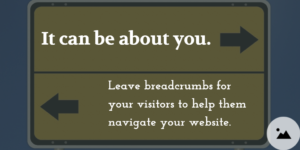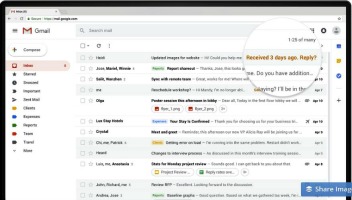Your website shouldn’t be a maze.
The last thing you want to do is make your visitors work.
Prospects shouldn’t get buried 3 clicks in. Nor should they have to rely on a site search bar to find the information they want. Or have to call you because basic information is hidden or missing.
Your website should be structured so the navigation is intuitive.
Your website navigation is not about you.

It’s important that your website navigation be structured to help prospects (or customers, clients, members, patients, or any other visitors) find what they’re looking for. If you understand what your prospects want, then you should know what content they want. What content resonates. What information is helping them choose you.
It can be about you too.

If you build your site wisely, then you can lead prospects to the information they are looking for. You can also guide people from page to page on a path that moves them from browsing to buying. Think of it like a trail of breadcrumbs.
When I’m analyzing a website’s effectiveness, I start with two things:
- the “look” test: can I figure out what do to first, next, last?
- the analytics: are, and how are, visitors navigating across the site?
If you make your website navigation too hard, people will give up and do business with your competitor.
Google is only a search bar away.
Here’s the thing. If you don’t make it easy I’m going somewhere else. Your prospects and customers are just like me. And you.
It’s easy to look elsewhere. And once we start down that path, we rarely come back.
Think with Google has a terrific post on how customers navigate on their path to purchase:
“The path to purchase, from start to finish, is rarely linear—it’s more akin to a scavenger hunt. Along the customer journey, one search can spark an entirely new idea or want. And one search can make the difference between your brand and the competition.”
The post identifies seven opportunities to grab your customer’s attention, including information (be a trusted resource), complementary categories, reviews, and the power of mobile. Make sure your business is thinking about these things — because your customers are acting on them.



